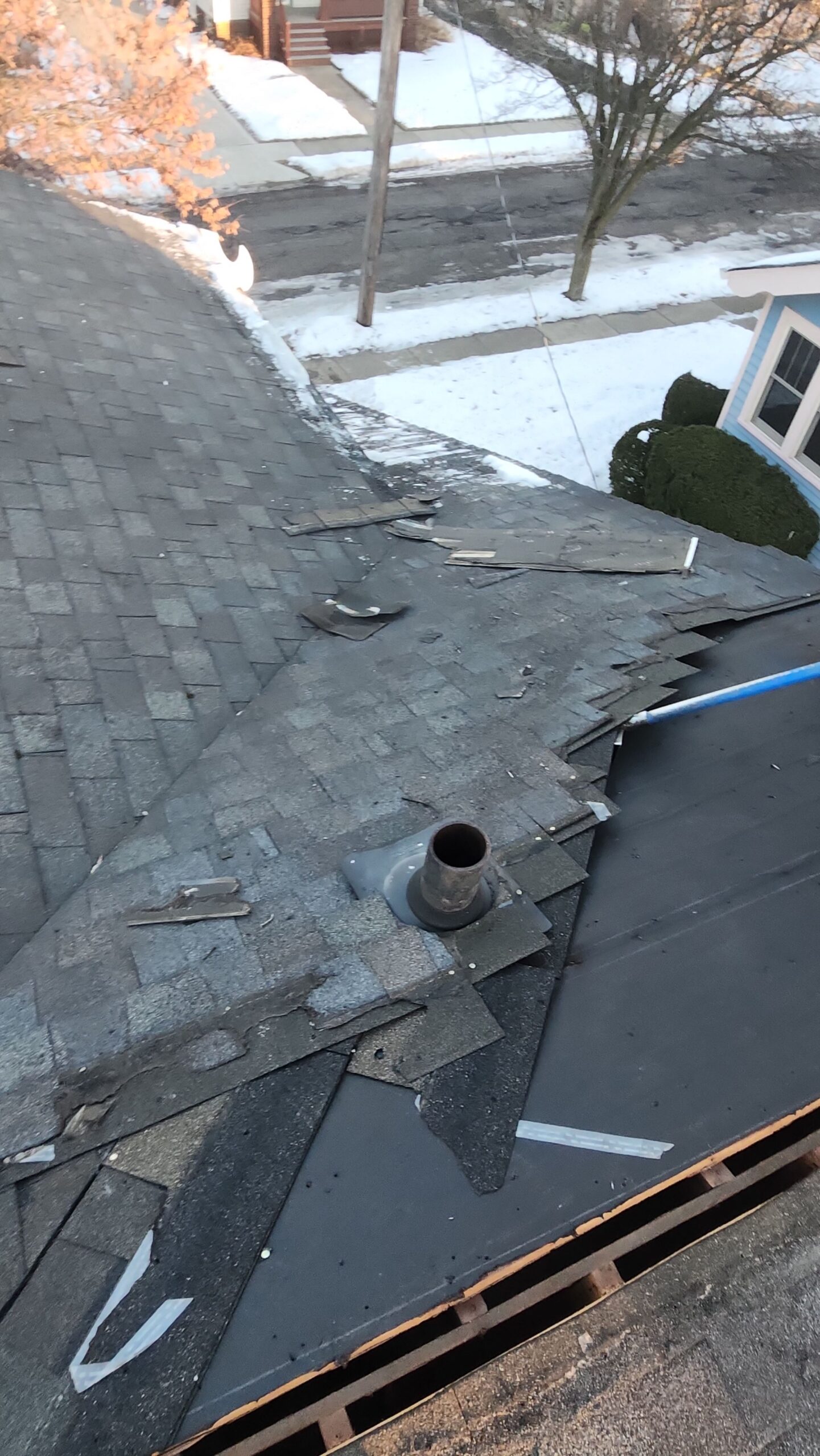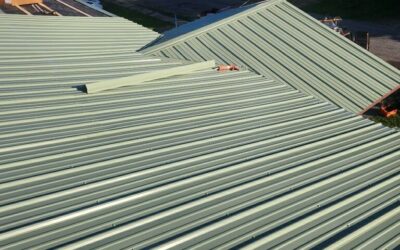Will Insurance Cover a 20-Year-Old Roof?
When it comes to home insurance, many homeowners wonder whether their insurance will cover damage to their roof, especially if the roof is older. For example, a 20-year-old roof might be nearing the end of its lifespan, and you may be concerned about whether your insurance policy will provide the coverage you need to replace or repair it. In this blog post, we’ll explore the factors that influence whether insurance will cover damage to a 20-year-old roof, what to do if your roof is approaching or exceeding 20 years old, and how to navigate insurance claims in the event of roof damage.
As a homeowner in Cleveland, Medina, Lakewood, or Chagrin Falls, understanding how your roof’s age impacts your insurance coverage is crucial. Let’s dive into the details to help you make informed decisions about protecting your roof and home.
Factors That Impact Roof Insurance Coverage
Insurance policies are full of terms and conditions, and coverage can vary widely depending on your provider, location, and the specifics of your roof. When it comes to an older roof—like one that’s 20 years old—there are several factors that determine whether your insurance will cover repairs or replacement:
1. Type of Insurance Coverage
Your insurance policy type plays a significant role in determining whether a 20-year-old roof is covered. There are generally two types of home insurance policies that influence roof coverage:
- Actual Cash Value (ACV) Coverage: ACV policies reimburse you for the depreciated value of your roof. If your roof is 20 years old, the ACV policy may only cover the roof’s current value, which can be significantly lower than the original replacement cost. For example, if your roof cost $10,000 to replace when it was new, and it’s 20 years old, its depreciated value might be around $2,000 or less, depending on the wear and tear it has experienced.
- Replacement Cost Coverage (RCC): RCC policies are more generous, as they cover the cost to replace the roof with materials of like kind and quality, without accounting for depreciation. If you have RCC, you’re more likely to receive full compensation for your roof replacement, but there are often exceptions if your roof is nearing the end of its lifespan.
If you’re unsure whether your policy is ACV or RCC, you can review your policy details or speak with your insurance agent to understand the type of coverage you have.
2. The Age of the Roof
The age of your roof is one of the most important factors that insurance companies consider when deciding whether or not to provide coverage. While some insurance companies may offer full coverage for a 20-year-old roof, others may be hesitant to cover an older roof due to the increased risk of wear, tear, and damage. In general, most roofs have a lifespan of about 20 to 30 years, depending on the material. Once your roof is past its prime, insurance providers may either reduce coverage, increase your premium, or refuse coverage altogether.
- Shingle Roofs: Asphalt shingle roofs typically last 20 to 25 years. If your roof is approaching or exceeding 20 years of age, it may show signs of wear, such as curling, cracking, or missing shingles. This could impact whether your insurance provider will cover repairs or replacement.
- Metal Roofs: Metal roofs often last much longer—up to 50 years or more. If you have a metal roof, even at 20 years old, it may still be in good condition and eligible for coverage, as long as it hasn’t sustained significant damage.
- Tile and Slate Roofs: Tile and slate roofs can last even longer than asphalt shingles, often reaching 50 years or more. If you have one of these roof types, your 20-year-old roof may still be in relatively good condition and covered by insurance.
In areas like Cleveland Heights, Willoughby, or Youngstown, where weather conditions can be extreme, your roof may experience additional wear and tear, which can further influence how your insurance company views its age and coverage eligibility.
3. Maintenance and Condition of the Roof
Another crucial factor in determining insurance coverage for a 20-year-old roof is the roof’s current condition. If your roof has been well-maintained over the years with regular inspections, repairs, and maintenance, it’s more likely to be covered by your insurance provider. On the other hand, if your roof has been neglected and shows signs of damage or deterioration, your insurer may deny coverage for repairs or replacement.
Some things to consider in terms of roof maintenance include:
- Regular Inspections: Scheduling regular roof inspections helps identify small issues before they become major problems. In places like Pepper Pike or Twinsburg, where seasonal changes cause fluctuating temperatures and precipitation, a proactive approach to maintenance can prevent weather-related damage.
- Repairs and Upkeep: If you’ve made repairs over the years, keeping records of those repairs is important. Insurance companies may be more likely to provide coverage for a roof that has been well-maintained and repaired as needed.
- No Major Leaks or Water Damage: If your roof shows no signs of leaks or water damage, your insurance provider is more likely to offer coverage. Insurance companies prefer to cover roofs that are in good shape, as it reduces the risk of further damage to your home.
What to Do If Your Roof Is 20 Years Old and Needs to Be Replaced
If your roof is 20 years old or older and you’re noticing signs of wear or damage, it’s important to take action as soon as possible. Even if your insurance policy will cover roof repairs or replacement, there are steps you can take to ensure that the process goes smoothly:
1. Check Your Insurance Policy
The first thing you should do is review your home insurance policy or speak with your insurance agent. They can clarify the details of your coverage, including whether your roof is covered in the event of damage or if there are exclusions related to age or condition. Be sure to ask if your roof is covered under an actual cash value or replacement cost policy.
2. Get a Roof Inspection
Before filing a claim with your insurance company, it’s a good idea to have a professional roofing contractor inspect your roof. A roofing professional can provide an accurate assessment of your roof’s condition and determine whether repairs or a full replacement are necessary. The inspector can also document any damage to present to your insurance company.
In areas like Madison or Wickliffe, where storm damage can be common, a roof inspection after a major weather event may help you understand the extent of the damage and how it could be covered.
3. File a Claim with Your Insurance Provider
If your roof has sustained significant damage and needs to be replaced or repaired, you’ll need to file a claim with your insurance provider. When doing so, be prepared to provide the documentation you’ve gathered, including the roofing inspection report, photographs of the damage, and any repair estimates.
4. Consider Roof Replacement Options
If your insurance company offers coverage for roof replacement, you may be able to get a new roof that is more durable and energy-efficient. In Ohio, especially in cities like Beachwood and Chardon, investing in a high-quality roof can increase your home’s value, improve energy efficiency, and ensure better protection against future weather events.
What to Know About Roof Replacement and Insurance Coverage
While it’s possible that insurance will cover the cost of replacing a 20-year-old roof, there are a few things to keep in mind:
1. Depreciation
If you have an ACV policy, be prepared for the fact that your insurance company will likely factor in depreciation. This means that if your roof is 20 years old, you may receive less compensation for the full replacement cost.
2. Roof Age Limitations
Some insurance providers may place a limit on how old your roof can be in order to receive coverage. For example, an insurance company may refuse to cover a roof that’s older than 20 or 25 years. It’s important to ask your insurance provider about their specific roof age policies and whether they have any exclusions related to older roofs.
3. Roof Replacement Costs and Upgrades
If your roof is covered by insurance, keep in mind that the insurer will typically pay for the cost of replacing your roof with materials of like kind and quality. However, if you want to upgrade your roof to a higher-quality or more durable material, you may have to pay the difference out of pocket.
Conclusion
For homeowners with a 20-year-old roof, the question of whether insurance will cover repairs or replacement depends on a variety of factors, including your insurance policy type, the condition of your roof, and whether your roof has been properly maintained over the years. Whether you live in Cleveland, Lakewood, Willoughby, or Youngstown, it’s essential to stay proactive about roof inspections and maintenance to ensure that your roof is protected and eligible for insurance coverage.
If your roof is nearing or has exceeded 20 years of age, it may be time to evaluate your roof’s condition and consider getting a professional inspection. With the right coverage, you can ensure that your home stays safe and secure, even if your roof has reached the end of its lifespan.
For assistance with roof inspections, repairs, or replacement, reach out to S&K Construction and Remodeling LLC. Our team of roofing professionals can help you navigate the complexities of roof insurance claims and ensure that your roof is in top condition.
 (440) 307-2060
(440) 307-2060


